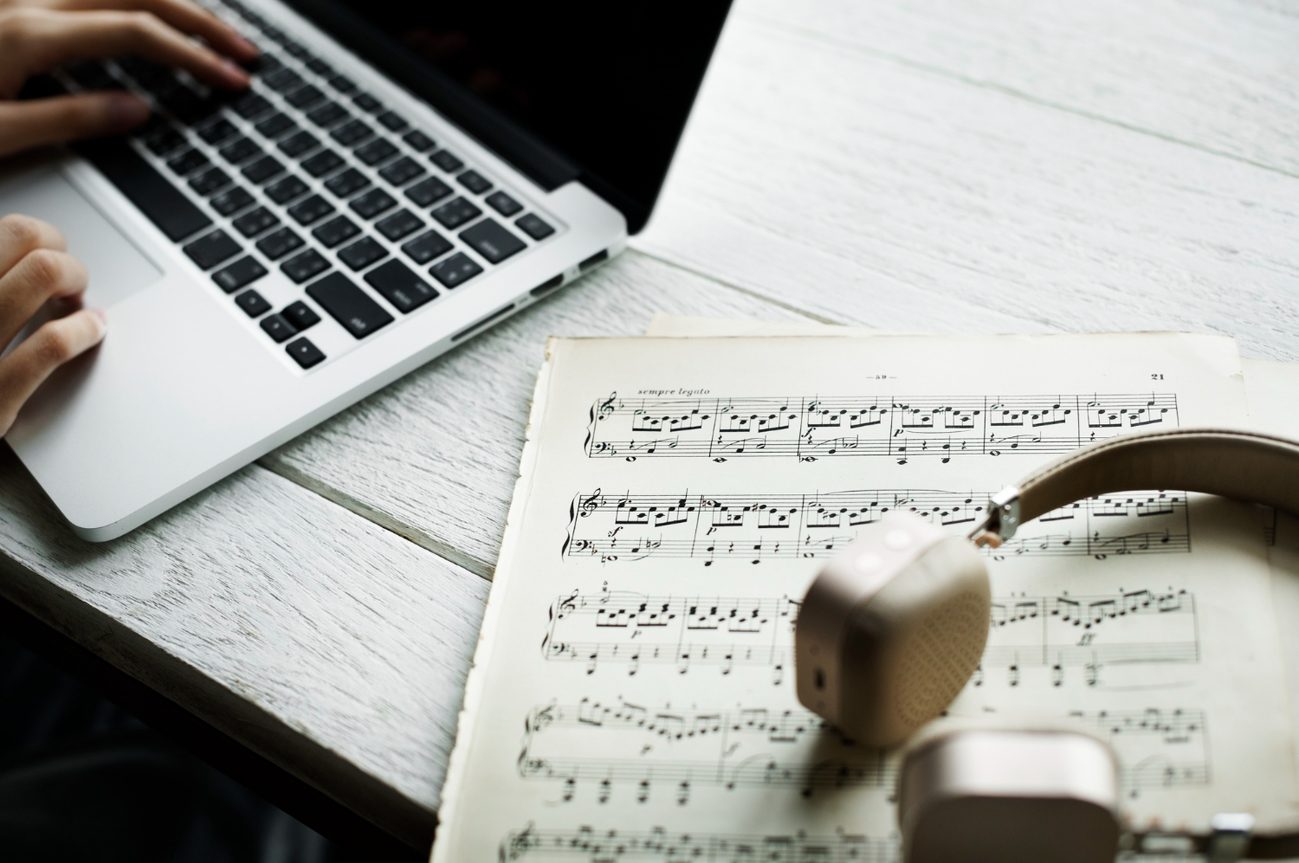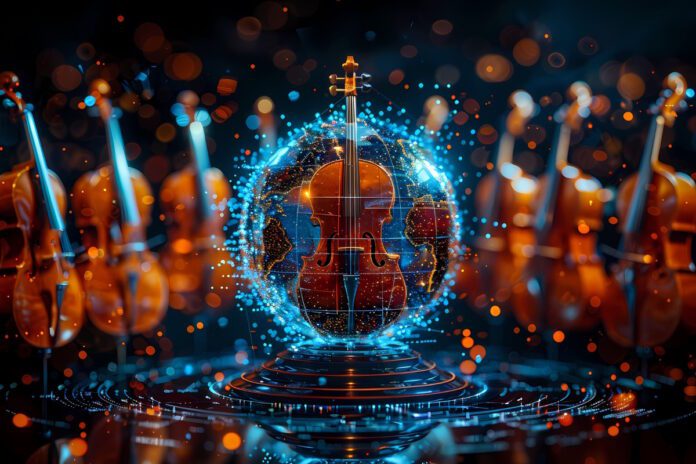Music and artificial intelligence (AI) are two powerful forces that, when combined, can create extraordinary outcomes. Suno AI, a leading AI company, has been making waves in the realm of AI-driven music composition and analysis. By leveraging advanced machine learning algorithms and deep understanding of music theory, Suno AI enables musicians, composers, and enthusiasts to explore new creative horizons. This comprehensive guide delves into how you can use Suno AI to enhance your music compositions through the principles of music theory. Whether you’re a seasoned musician or a beginner, this guide will help you understand how to integrate AI with music theory effectively.
Understanding Suno AI
Overview of Suno AI
Suno AI is a cutting-edge AI platform that specializes in various applications, including music composition. It uses sophisticated algorithms to analyze musical structures, generate compositions, and provide insightful feedback. By incorporating music theory into its AI models, Suno AI ensures that the music it generates is not only innovative but also harmonically and rhythmically sound.
Key Features:
- Music Composition: Generate original music pieces based on user inputs and preferences.
- Music Analysis: Analyze existing compositions to provide feedback and suggestions for improvement.
- Collaboration Tools: Facilitate collaboration between musicians by providing a shared platform for composing and editing music.
The Basics of Music Theory
Fundamental Concepts
To effectively use Suno AI in conjunction with music theory, it’s essential to understand the basic principles of music theory. These principles form the foundation upon which Suno AI builds its compositions and analyses.
Key Concepts:
- Scales and Modes: The building blocks of melody and harmony. Common scales include major, minor, and pentatonic scales.
- Chords and Harmony: Combinations of notes that create harmony. Understanding chord progressions is crucial for composing harmonious music.
- Rhythm and Meter: The timing and organization of beats in music. Common time signatures include 4/4, 3/4, and 6/8.
- Melody and Counterpoint: The main theme of a piece of music (melody) and the interplay of different melodic lines (counterpoint).
How Suno AI Integrates Music Theory
AI-Driven Music Composition
Suno AI uses advanced machine learning techniques to generate music compositions that adhere to the principles of music theory. By inputting parameters such as key, tempo, and style, users can guide the AI to create compositions that meet their specific requirements.
Steps:
- Define the Key and Scale: Choose the key and scale you want the composition to be in. For example, C major or A minor.
- Set the Tempo and Time Signature: Determine the tempo (beats per minute) and the time signature (e.g., 4/4 or 3/4).
- Select the Style and Instruments: Specify the style of music (e.g., classical, jazz, rock) and the instruments to be used.
- Generate the Composition: Let Suno AI generate a composition based on the input parameters. The AI will use music theory principles to ensure the composition is harmonically and rhythmically sound.
Practical Application of Suno AI in Music Composition
Step-by-Step Guide to Using Suno AI
- Creating a New Composition
- Log In to Suno AI: Access the platform and log in to your account.
- Set Up a New Project: Create a new project and input the desired parameters such as key, tempo, style, and instruments.
- Generate Initial Composition: Use Suno AI to generate an initial composition. Review the generated music and make adjustments as needed.
- Analyzing and Improving Existing Compositions
- Upload Your Composition: Upload an existing composition to Suno AI for analysis.
- Receive Feedback: The AI will analyze the composition and provide feedback on areas such as harmony, melody, and rhythm.
- Incorporate Suggestions: Use the feedback to improve your composition. Suno AI may suggest chord changes, melody adjustments, or rhythmic modifications.
- Collaborating with Other Musicians
- Share Your Project: Use Suno AI’s collaboration tools to share your project with other musicians.
- Real-Time Editing: Collaborate in real-time, allowing multiple users to make changes and provide input simultaneously.
- Finalize Composition: Work together to finalize the composition, ensuring that all contributions are harmoniously integrated.

Advanced Techniques with Suno AI
Incorporating Counterpoint
Counterpoint is a compositional technique that involves the interplay of independent melodic lines. Using Suno AI, you can create intricate counterpoint by specifying the rules and constraints based on music theory principles.
Steps:
- Define Counterpoint Rules: Input rules for counterpoint, such as intervals and voice leading constraints.
- Generate Melodic Lines: Use Suno AI to generate multiple melodic lines that adhere to the counterpoint rules.
- Refine and Edit: Review the generated lines and make any necessary adjustments to ensure a cohesive and harmonious result.
Exploring Modal Interchange
Modal interchange involves borrowing chords from parallel modes to add harmonic variety to your compositions. Suno AI can assist in integrating modal interchange by suggesting appropriate chords and progressions.
Steps:
- Select Parallel Modes: Choose the parallel modes you want to incorporate (e.g., Dorian, Phrygian).
- Generate Chord Progressions: Use Suno AI to suggest chord progressions that incorporate modal interchange.
- Integrate and Refine: Integrate the suggested chords into your composition and refine the harmonic transitions.
Benefits of Using Suno AI in Music Composition
Enhanced Creativity
By automating certain aspects of music composition, Suno AI frees up musicians to focus on creative expression. The AI can generate ideas, suggest harmonies, and explore musical styles that the composer might not have considered, leading to more innovative and diverse compositions.
Improved Efficiency
Suno AI streamlines the music composition process, making it faster and more efficient. By automating tasks such as melody generation and harmonic analysis, composers can produce high-quality music more quickly, allowing them to focus on refining and perfecting their work.
Accessibility for All Skill Levels
Suno AI makes advanced music composition accessible to musicians of all skill levels. Beginners can use the AI to learn about music theory and composition, while experienced musicians can leverage the technology to enhance their creative process.
Challenges and Considerations
Balancing AI and Human Creativity
One of the primary challenges when using AI in music composition is finding the right balance between AI-generated content and human creativity. While Suno AI can provide valuable suggestions and generate high-quality compositions, it’s essential for musicians to infuse their personal touch and creativity into the final product.
Ensuring Ethical AI Use
As with any AI application, it’s crucial to consider the ethical implications of using AI in music composition. This includes ensuring that AI-generated music respects intellectual property rights and that the technology is used to complement rather than replace human musicians.
Future Directions for Suno AI and Music Theory
Integration with Augmented Reality (AR)
Future developments may see the integration of Suno AI with augmented reality (AR) to create immersive music composition experiences. This could involve visualizing musical structures in 3D space and interacting with AI-generated music in real-time.
Expansion of Collaborative Features
As remote collaboration becomes increasingly important, Suno AI may expand its collaborative features to facilitate seamless, real-time interaction between musicians across the globe. Enhanced collaboration tools could include real-time audio editing and virtual jam sessions.
Advanced Music Theory Integration
Suno AI could further integrate advanced music theory concepts, such as advanced counterpoint techniques, microtonality, and algorithmic composition methods, to offer even more sophisticated and creative tools for composers. These advancements would allow musicians to explore new musical territories and push the boundaries of traditional composition.
Practical Tips for Using Suno AI in Music Composition
Setting Clear Objectives
When using Suno AI for music composition, it’s essential to set clear objectives for your project. Define what you want to achieve with your composition, such as a specific mood, style, or musical structure. Clear objectives will guide the AI in generating music that aligns with your vision.
Steps:
- Define the Genre: Choose the genre that best fits your project, such as classical, jazz, electronic, or pop.
- Specify the Mood: Decide on the mood you want to convey, such as happy, sad, energetic, or calm.
- Outline the Structure: Determine the structure of your composition, including the number of sections (e.g., verse, chorus, bridge) and their order.
Experimenting with Different Parameters
One of the strengths of Suno AI is its ability to experiment with different musical parameters. Don’t be afraid to try various keys, scales, tempos, and instrumentation to see how they affect the composition. Experimentation can lead to unexpected and exciting musical ideas.
Steps:
- Change the Key: Experiment with different keys to find the one that best suits your composition.
- Adjust the Tempo: Try various tempos to see how they impact the feel and energy of your music.
- Mix Different Instruments: Use different combinations of instruments to create unique soundscapes.
Using AI as a Learning Tool
Suno AI can also be an excellent learning tool for musicians. By analyzing AI-generated compositions and understanding the music theory behind them, you can enhance your knowledge and skills. Use Suno AI to explore new musical concepts and techniques.
Steps:
- Analyze AI Compositions: Study the compositions generated by Suno AI to understand their harmonic and rhythmic structures.
- Learn from Feedback: Use the feedback provided by Suno AI to improve your compositions and deepen your understanding of music theory.
- Practice New Techniques: Apply the techniques and concepts learned from AI compositions to your own music.

Case Studies: Success Stories with Suno AI
Case Study 1: Classical Composition
A classical composer used Suno AI to generate new compositions inspired by the works of Bach and Beethoven. By inputting specific parameters, such as key, tempo, and harmonic style, the composer was able to create original pieces that captured the essence of classical music while incorporating modern elements.
Outcome:
- High-Quality Compositions: The AI-generated compositions were praised for their complexity and adherence to classical music theory.
- Enhanced Creativity: The composer was able to experiment with new ideas and techniques, leading to innovative compositions.
Case Study 2: Jazz Improvisation
A jazz musician used Suno AI to explore new improvisational ideas. By analyzing the AI-generated solos and understanding their underlying harmonic and rhythmic structures, the musician was able to incorporate these ideas into their own playing, leading to more creative and dynamic performances.
Outcome:
- Improved Improvisation: The musician’s improvisational skills improved, with more varied and interesting solos.
- New Musical Insights: The AI provided fresh perspectives on jazz harmony and rhythm, enriching the musician’s understanding of the genre.
Case Study 3: Pop Music Production
A pop music producer used Suno AI to generate catchy melodies and chord progressions for a new hit song. By inputting specific parameters such as genre, mood, and tempo, the producer was able to create a polished and commercially viable track.
Outcome:
- Hit Song Creation: The AI-generated elements contributed to a song that achieved commercial success and charted on multiple platforms.
- Streamlined Production: The AI helped streamline the production process, saving time and resources.
Future Prospects for Suno AI and Music Theory
AI-Driven Music Education
Suno AI has the potential to revolutionize music education by providing personalized learning experiences. AI-driven tutoring systems can adapt to individual learning styles and paces, offering tailored feedback and guidance to students.
Expanding AI Capabilities
As AI technology continues to evolve, Suno AI will expand its capabilities to include more advanced music theory concepts and compositional techniques. Future developments may involve AI that can compose in microtonal scales, use generative grammar for music, and create entirely new musical genres.
Conclusion
Suno AI is transforming the landscape of music composition by integrating advanced AI technologies with deep music theory knowledge. By providing tools for composition, analysis, and collaboration, Suno AI empowers musicians to explore new creative horizons and enhance their musical skills. Whether you’re a beginner or an experienced musician, Suno AI offers valuable resources to help you compose, analyze, and improve your music. Embrace the future of music with Suno AI and discover the endless possibilities of AI-driven creativity.
Useful Links
- Suno AI Overview
- Introduction to Music Theory
- AI Music Composition Tools
- Collaborative Music Platforms
- Counterpoint in Music
- Modal Interchange Techniques
- Creative AI in Music
- Efficiency in Music Production
- Accessible Music Tools
- Balancing AI and Creativity
- Ethical AI in Music
- AR in Music
- Advanced Music Theory
- Classical Composition with AI
- Jazz Improvisation with AI
- Pop Music Production with AI
- AI in Music Education
- Future of AI in Music
Summary
Suno AI is revolutionizing the way we approach music composition by integrating the principles of music theory with advanced AI technologies. From generating original compositions and analyzing existing music to facilitating remote collaboration and enhancing music education, Suno AI offers a comprehensive suite of tools that cater to musicians of all skill levels. By understanding the basics of music theory and leveraging the capabilities of Suno AI, musicians can explore new creative horizons, improve their skills, and produce high-quality music efficiently.
As AI continues to advance, the potential applications in music will only expand, offering exciting opportunities for innovation and creativity. Whether you’re a beginner looking to learn the fundamentals of music theory or an experienced composer seeking to push the boundaries of your creativity, Suno AI provides the resources and support needed to achieve your musical goals.
Final Thoughts
The integration of AI and music theory through platforms like Suno AI represents a significant milestone in the evolution of music composition. By harnessing the power of AI, musicians can unlock new levels of creativity, efficiency, and collaboration. As we move forward, the continued development of AI technologies will undoubtedly shape the future of music, offering endless possibilities for composers, performers, and educators alike.
Embrace the future of music with Suno AI and discover how the synergy of AI and music theory can transform your musical journey. Stay informed, stay creative, and explore the endless possibilities that await in the world of AI-driven music composition.
Additional Resources
For those interested in further exploring the integration of AI and music theory, here are some additional resources and articles:
- AI and Music: The Perfect Duet
- The Role of AI in Modern Music Production
- AI-Powered Music Analysis
- Ethical Considerations in AI Music
- The Future of AI in the Arts
By leveraging these resources and the capabilities of Suno AI, you can enhance your understanding of music theory, improve your compositions, and stay at the forefront of AI-driven music innovation. Happy composing!
By integrating the principles of music theory with the advanced capabilities of Suno AI, musicians can unlock new creative possibilities and enhance their compositions. Whether you’re a beginner or an experienced composer, Suno AI offers valuable tools and resources to support your musical journey. Explore, create, and innovate with Suno AI!



